Ready to be the next Twitch star or Mixer mogul?
It’s never too late to start, but you also can’t use a potato webcam that looks like liquor store video surveillance footage—you’re not going to hit that level of fame that you’re after if your fans can’t even make out what you look like.
Ninja would have looked like a blue blob with a headband if he used a stock-level streaming camera, so let’s take lessons from the big Twitch rivals and start this thing off right.
Here, we’ve got the best streaming camera, a few budget-friendly models, and runner-ups to boot.
You want decent FPS, a wide viewing angle to get the LED/RGB strips in your streaming setup in the background, and 1080p to get every pixel in that bottom left corner that you can. It could be your face on the next sponsor commercial, quitting that nine-to-five and streaming full-time.
Best Camera for Streaming – Reviews & Buying guide for 2025
Logitech HD Pro C920 Webcam
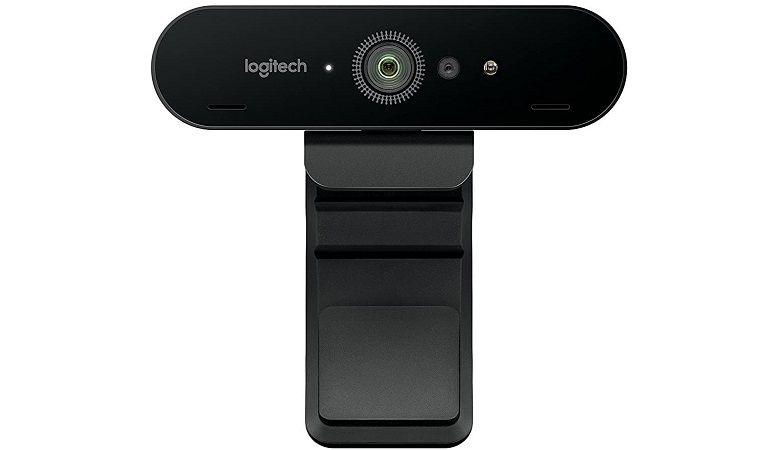
Logitech was the company that invented the wireless mouse, and they’re still one of the most sought-after brands for computer accessories today. Why’s that? Because they change with the times, and keep their gear at a top-tier level.
As the best camera for streaming, you get a solid 1080p resolution regardless of what you’re doing, unlike other cameras that boast their 4K, but only say it’s for still images. Nothing but HD all the way through.
There’s nothing special about the lens here. It’s a 78° angle camera, which is more than enough for intimate streaming setups, just not something I would use if you’re making YouTube content that’s supposed to be better quality. 78° can seem kind of close for a lot of people unless you’re 15% of the screen and just in the corner.
Everyone has their own gaming rigs these days, and cable management can be a nightmare. Thankfully, Logitech’s HD Pro camera has a five foot cable, which should run from your monitors, through your conduits, and to your PC tower with little to no issue.
Their unique mounting bracket gives you plenty of room to mess around, no matter what type of monitor you have. It is made of metal, so i would just be careful when sliding it on the monitor so you don’t scratch the paint.
Something that’s awesome about this camera is that you can opt for the privacy model, which comes with a full clip that can snap down over the lens for total privacy.
We all know how many YouTube compilations there are of streamer fails where they forgot their camera was on, so to avoid becoming a highlight reel, you can pop this down when you’re done just to be extra sure.
Microphones are present on either side, giving you plenty of audio input to connect with your audience without your voice sounding tinny or distant. Just be warned that these pick up on a lot of noises, so if you’re in a louder house, background chatter might come up. At least your viewers will be able to hear you loud and clear.
Product specification
Megapixels: 15 MP
Compatible w/ SD Cards?: No
Flash?: No
Lens Size: Average, 78° FOV
Resolution: 1920 x 1080
Razer Kiyo Streaming Webcam
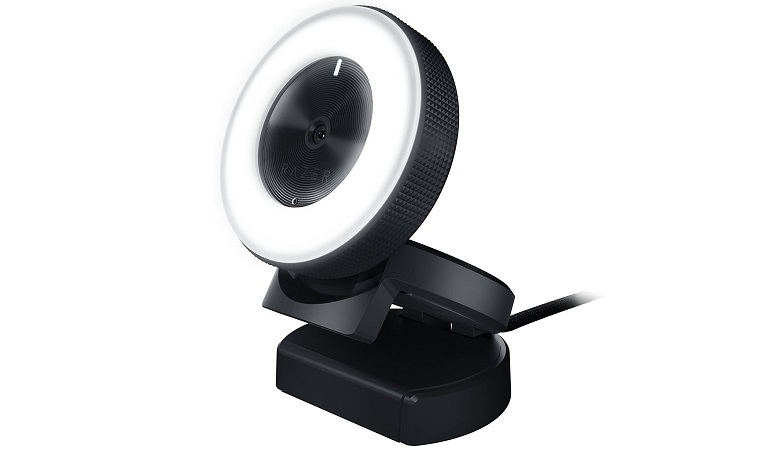
We all know Razer. If you’re a serious streamer, you might even be using Razer’s keyboard and mouse combo. It’s time to complete the setup with their streaming webcam, designed with a full LED O-ring that gives you the perfect level of brightness for your close-up in the camera.
Even though it’s one of the best cameras for live streaming, it has a very close FOV at 74°. That brightness is going to help you become more visible and appear more professional while you’re streaming, but your viewers won’t miss a single detail as a result.
You can opt in for the Seiren X or Seiren Emote microphone bundle if you’d like, which also comes straight from Razer. The microphones both bolster good quality, so it’s something to consider if you still haven’t grabbed the rest of your streaming setup.
Razer’s camera is excellent, but there’s a reason that it didn’t top Logitech in our comparison test. You can record in 1080p at 30 FPS, which just doesn’t quite punch up the way Logitech does. That being said, 30 FPS is still good enough for most streamer needs, it’s just more susceptible to frame skipping if you hit some input lag. If you tone down the quality yo 720p, you can record in 60 FPS.
Razer’s built-in driver for this webcam gives you plenty of control through their camera control dashboard, so you can mess with the lighting (which is a requirement if you also have background lights), contrast, and the white balance. It’s more than you’re going to get with most webcams.
The control is nice, and the ability to tone down that 5600k brightness is good, but the auto low light balance and focus is also super helpful if you’re very animated on camera while you’re streaming.
With this purchase, you’re going to get a one-year warranty on all hardware and protection against manufacturer defects, but knowing Razer, I would be surprised if anything escaped their quality control. If so, Razer has excellent customer service with knowledgeable representatives that actually help with any issues you have.
Product specification
Megapixels: 4 MP
Compatible w/ SD Cards?: No
Flash?: No (LED ring for light)
Lens Size: Small, 74° FOV
Resolution: 1920 x 1080
Microsoft LifeCam Cinema Camera
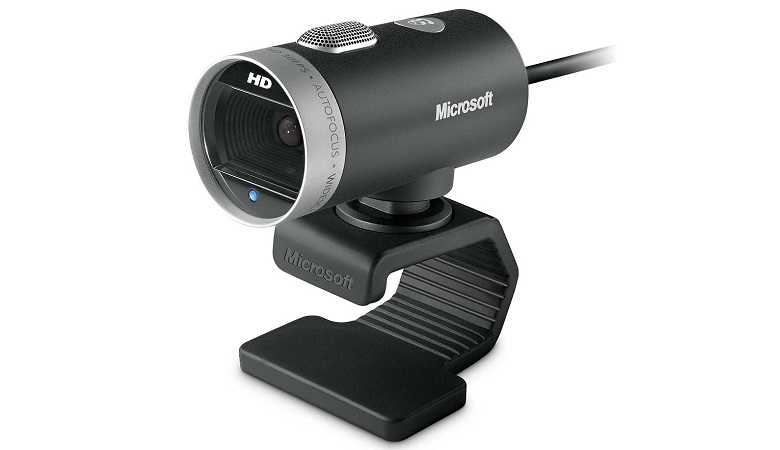
Microsoft dips their toes in just about every pool of products possible, so it should come as no surprise that they made a top tier webcam. While it made third place on our list, it’s important to know that it’s still considered a budget webcam, so you are going to see some budget-friendly trade-offs.
It’s not the best camera for Twitch, but it’s the best in its class. You have the option to choose from the retail or business camera, but for the sake of this review, we’ve gone with the retail camera to give you the most bang for your buck.
With a 360° rotating head and a wide 86° FOV, you’ll be able to capture anything and everything that you want to. When it comes to resolution, you’re capped at 1280 x 720. This is still good enough by most regulations to stream and compete in tournaments for online FPS games, but if you’re using it to record YouTube videos as well, you will hit a snag with video quality (especially since YouTube can play 4K).
Obviously, you’re going to be using this on Windows since it is a Microsoft product. You can attach it to a laptop with a thin screen without problems, and utilize the power of CMOS sensor technology. As long as you have a free USB 2.0 port, you’re good to rock and roll—the drivers are already pre-installed in your webcam, so there are no extra downloads necessary.
While it’s not the most premium pick, there is a built-in noise cancelling microphone that does a fantastic job at cutting out unwanted static and inconsistencies in your audio transmissions. Overall, it’s a solid streaming camera that isn’t going to push the limits, just not the top of the line. Modest budgets will greatly benefit from Microsoft’s LifeCam.
Product specification
Megapixels: 8 MP
Compatible w/ SD Cards?: No
Flash?: No
Lens Size: Wide, 86° FOV
Resolution: 1280 x 720
Logitech BRIO Ultra HD Webcam

If you’re still wondering if Logitech really can be that good, the answer is yet. They even come into play for budget-tier models and still crack our elite top five list. With the BRIO Ultra HD Webcam, you get a wide angle that can be electronically controlled to provide either 65° or up to 90° of coverage.
For live stream cameras, you’re not going to be pushing 4K coverage unless you’ve got a personal server in your own home, but if that’s not the case, then you can use the BRIO’s 4K recording mode to make YouTube videos in the highest quality.
You could flawlessly stream in 1080p at 60 FPS, but as a heads up, the 4K records at a cap of 30 FPS, and requires a USB 3.0 port to get the full use out of it. While you don’t get an O-ring light, there’s still a small RightLight 3 built into the front of your camera interface. That helps illuminate your face just a bit.
The great thing about this camera is its versatility. It’s good for streaming, online school, remote work, and collaboration with other creators, if that’s what you’re into. This works well with Windows and Mac, and can be connected via a USB 3.0, A and C connection for ultimate versatility.
So where do the limitations come in? The mounting bracket is a little on the cheap side. You have to make sure your PC monitor is virtually dust-free on the back side to prevent sliding, and keep this tactile against the material.
All things considered, it works out to be a very good webcam, but depending on how far you want this to go and how long you plan on streaming, it might be a little overpowered. Twitch streamers that would benefit from this the most would definitely be IRL streamers, or streamers who plan on making vlog-style introductions for YouTube content, even if you’re using stream footage.
Product specification
Megapixels: 13 MP
Compatible w/ SD Cards?: No
Flash?: No
Lens Size: Adjustable small/large, 65° to 90° FOV
Resolution: 3840 x 2160 (4K)
TedGem 1800P Full HD Webcam
Last but not least, we have the TedGem cam with a good amount of 1080p power, and functional UI for adjusting and mounting. Out of the box, the TedGem is super fast to set up, and easy to clip onto your monitor with minimal intervention required. It just goes on, and you’re good to go.
As far as good streaming cameras go, this hits the nail on the head for quality and price. You can stream up to 720p, but you can record video up to 1080p, so for the multifaceted Twitch streamer and YouTuber, this is just well-received.
You get full plug-and-play power, with a pre-installed driver in your webcam. In the future, you may have to update the drivers through TedGem, depending on what system you upgrade to or what Windows updates come your way.
If you’re really stretching the budget and you end up being on a Chromebook, this is totally plug-and-play compatible as well. No need to get a TedGem-specific app or anything like that. There’s a good amount of noise cancellation on the microphone, but nothing overly special. If you’re streaming, getting a Yeti Snowball and negating the webcam sound would be your best bet. It gets the job done, it’s just a temporary microphone solution is all.
One of the best features of this camera is the 90° angle camera, giving you plenty of spotlight on your stream. Utilizing a DRC wide dynamic function, you also appear in crisp, enhanced imagery, so there will be minimal blurring. The only thing I will say is that the video compression is pretty garbage, so you’ll have to rely on your rendering program to minimize recorded video files.
Product specification
Megapixels: N/A
Compatible w/ SD Cards?: No
Flash?: No
Lens Size: Large, 90° FOV
Resolution: 1920 x 1080
Streaming Camera Buying Guide & FAQ
What is a Streaming Camera?
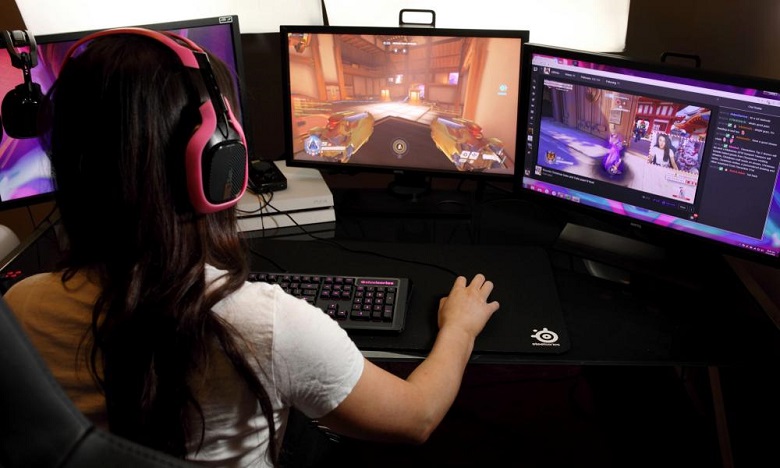
Any camera that you stream with. When you stream games on Twitch, that’s basically like a real-time screen capture, so you don’t need a camera for that. Most Twitch stars use a webcam (usually in full HD) to display themselves in one of the corners of their livestream game screen, so that the viewers can see them and their reactions.
The best cameras for live streaming are webcams with a direct USB 2.0 or USB 3.0 connection to your PC IO shield. Streaming cameras display you, the Twitch star, in real-time along with your gameplay (which is why it’s important to have the right environment to stream so there will be few to zero interruptions).
What Type of Webcams is Best for Streaming on Twitch?
At the end of the day, it’s whatever you’re comfortable with. I don’t know what your setup is, but I do know what goals you should have as a Twitch star looking for the best video camera for streaming live video.
- Clear visual of your face
- Angle that provides a complementing post
- Enough clarity for low-light situations
- Ability to show accurate images despite surrounding lights (like RGB LED strips)
My streaming setup includes the Logitech C920, because I need that bit of zoom on the 78° angle. My camera is in a corner on a tripod, with a downward 30° angle on me, and I have an O-ring LED light surrounding the camera. I have a large desk with a three monitor display, so I’m relatively far away from the camera. That narrow FOV ends up working perfectly, because I’m still large enough on the feedback that people can see me in the corner.
If your setup is small and in a cramped space (we all have to start from somewhere, right?), then you’re going to benefit majorly from a wide angle camera, such as the TedGem that we just reviewed with a 90° viewing angle. It ends up providing a better close-up image in those intimate spaces.
Let’s say you’re a streamer that’s just starting out. You have a limited budget. Getting a webcam with a built-in microphone is a good idea, but even the best built-in cameras don’t have pop filters or higher grade microphones. They’re good, just not the best.
What Cameras do Famous Streamers Use?
While not the most famous, Shroud is at least in the top ten, and he uses the Logitech C920 HD Pro webcam (our top pick on this list) to achieve crisp visuals every single time. If you watch any of his streams or YouTube videos, you’ll get a taste for how high-quality his webcam really performs.
Nothing like a live demo, right?
Among the most famous streamers out there, we all know Ninja. Tyler Blevins uses the Logitech BRIO, which is one of the picks on this list. If you’re trying to get the exact same results as the Fortnite God (at least in terms of visuals), this is the way to go.
As a heads up, you will need a higher bandwidth if you’re going to support the highest resolution while streaming.
Another one of the greats is TimTheTatMan, and he actually uses a camera that didn’t make it onto our list. We just want to show you that everyone has their own preferences. He uses the Panasonic Lumix G7KS, which is a mirrorless 4K camera.
When you’re a big streamer, you can afford the internet plan to actually project 4K out to the masses, but it is an expensive choice as a fair warning.
How do I Stream Multiple Cameras on Twitch?
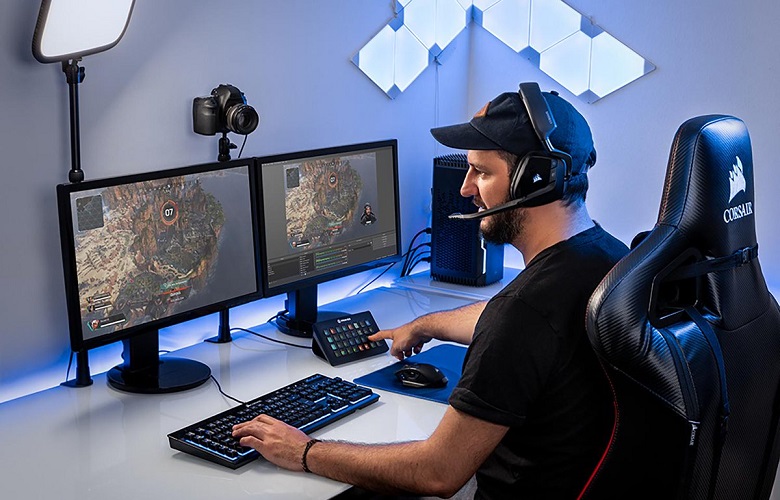
Twitch is basically just mirroring your broadcasting software, so you don’t have to do much in terms of twitch, you just have to be able to switch over from one camera to another in OBS, for example.
OBS has a plugin that lets you run and source two cameras at a time. Assuming that both of your cameras run through USB 3.0 ports, you could be overclocking the total amount of USB input allowed.
To fix this, you can reduce your resolution on each camera from 1080p to 720p, or setting a cap for frames per second in your camera configuration. You have to realize that running multiple cameras, a game, and streaming it all takes up a lot of power from your PC.
Move your cameras to different USB ports if you’re running into problems. Make sure the drivers are up to date on both of your cameras.
More often than not, a streamer will start with one camera, later upgrade to two, and they’ll be different cameras, running on different drivers. You have to manually update drivers, especially if your operating system goes through core updates.
Run the OBS plugin, and select which camera source you want to display on your streaming console at the specific times. To write an entire guide on OBS would take ages, so be sure to look up information and be somewhat proficient with that, or any broadcasting software you use before attempting dual cameras.
What Resolution is Best for Streaming on Twitch?
Without a doubt, you want to go for 1080p, which is HD. When you use a broadcasting software, like OBS, it can change the overall size of your webcam to fit the box that you set up for it on Twitch.
Basically, if your webcam box in the corner of the game is 256 x 256, OBS will scale down your 1920 x 1080 to fit within that box, rendering in as much clarity as possible.
Why is this important? Well, first of all, you want to be visible to your audience the entire time so that they can actually see who you are, and you can begin to make a name for yourself. Second, you may find yourself switching to your face cam as the entire stream when you have to do something sensitive in-game, such as purchasing digital currency.
We don’t need anybody seeing those credit card credentials as you enter them. This gives your viewers a full and clear picture of you without that blocky, static look that lower-grade cameras give you.
Third of all, you don’t know what your viewers are watching you on. 4K computer monitors are becoming more and more popular, and the people watching your streams might just also be gamers themselves, looking to gain some tips from their favorite streamer.
It’s plausible to assume that some of your viewers have a 4K screen, which means that the 256 x 256 box we talked about earlier is more like 1024 x 1024 to them. Your higher quality camera will come in handy.
Time to Stream
Once you get your setup going (and know how to use it to its fullest extent, of course), it’s all just getting used to streaming and shaking off the stage fright.
When you’re sitting on the best gear possible, you’re already a step ahead of 90% of the streaming community in terms of taking this seriously. It’s time to engage with your audience and build a following, y’know, now that they can see you properly.